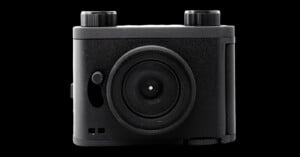
Chroma Camera’s New CubeFF is an Affordable 35mm Pinhole Camera
Chroma Camera, makers of modular medium format cameras, lenses, and more, has released the CubeFF, a full-frame 35mm pinhole camera.

Chroma Camera, makers of modular medium format cameras, lenses, and more, has released the CubeFF, a full-frame 35mm pinhole camera.
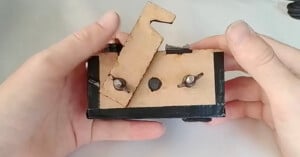
While cameras have gotten more complex over the years, there is something to be said for getting back to basics. To that end, the MVC, or Minimum Viable Camera, takes photography down to the studs in this pocket-sized 35mm pinhole affair.
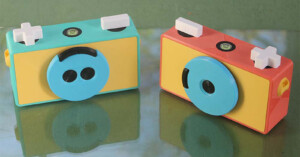
Scottish camera maker Finite Industries has announced the fi35, the company's first pinhole camera.
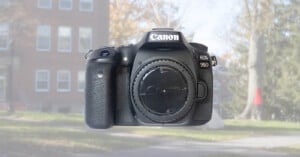
I was interested in seeing how well a pinhole would work on a small sensor (APS-C) DSLR so I decided to give it a try. All I needed to do was to drill a hole in the spare body cap, darken a piece of aluminum foil with a permanent marker, punch a small hole in it, and then tape it to the front of the body cap.
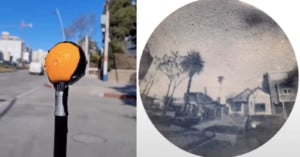
A viral TikTok video claiming that "oranges can take photos" proves that pinhole cameras can be made out of literally anything, including citrus fruit.

Astrophotographer Ian Griffin captured this unusual photo of a solar analemma that charts the Sun's path over a year using a pinhole camera with a 4x5 glass plate inside.
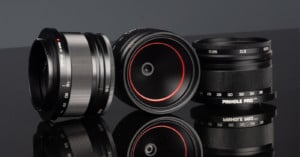
Thingyfy has announced the Pinhole Pro Max, what it claims is the most advanced pinhole lens in the world thanks to its variable 18-36mm focal length and six apertures.
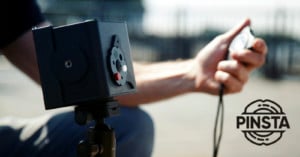
Pinsta Instant Camera is a new pinhole camera that can shoot directly onto positive 4x5 inch photographic paper where it develops internally, eliminating the need for a darkroom.
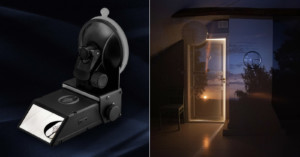
Finnish company Bonfoton has launched the BonfotonUP, a new device that allows users to project a camera obscura image right-side-up in contrast to how the visual phenomenon -- projected onto walls -- is traditionally formed upside-down.
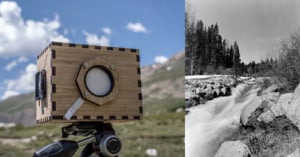
A film photographer has launched a crowdfunding campaign for DIY pinhole camera kits with the aim of making large-format shooting affordable, accessible, and easy.
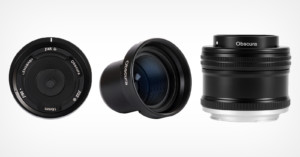
Lensbaby, a company known for making unconventional lenses and unique optics, has announced its latest lens: a three-in-one Pinhole-type optic called The Obscura.
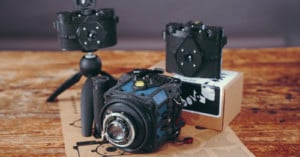
In 2016 and again in 2018, PetaPixel featured the work of Dora Goodman, a woman who was adding hand-crafted elements to analog cameras. Fast forward to 2021, and Goodman has gone steps further and finally created cameras of her own design.
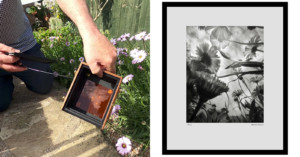
Fine art photographer Martin Henson has published a wonderful behind-the-scenes look at his pinhole photography process that highlights the results you can get when you use a high-quality camera, you get creative, and you know what the heck you're doing. The result is a masterclass in capturing high-quality pinhole photography that actually qualifies as fine art.
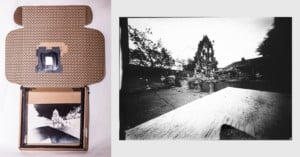
It's nearly the end of April 2020, the coronavirus lockdown is in full swing here in the UK, you've already been out for your one hours allowable exercise, and you're bored! This was me, and my predicament.

Working as an analogue photographer at Little Vintage Photography, Worldwide Pinhole Photography Day (#WPPD) is something that I love taking part in every year. Sadly with lockdown happening, the workshops and photowalks I'd normally run were of course, put on hold.
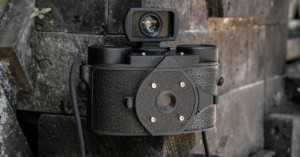
Dora Goodman—maker of gorgeous hand-crafted custom cameras like these—is back with another 3D-printed, open-source camera that you can make at home. It's called the SCURA, and it's a curved pinhole camera that shoots 60x25mm panoramic images on regular 35mm film.
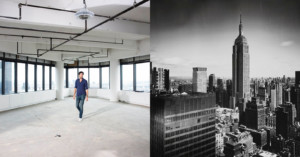
Brendan Barry is a UK-based photographer who's known for turning all kinds of unusual things into working cameras, from food and mannequins to shipping containers and camper trailers. But his latest project was his most ambitious yet -- turned a Manhattan skyscraper into a giant camera.
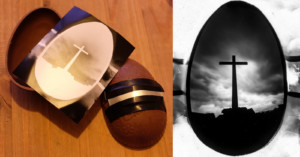
For Easter, I made a pinhole camera out of a chocolate Easter egg. In this 5-minute video and article, I'll show you how it's done.
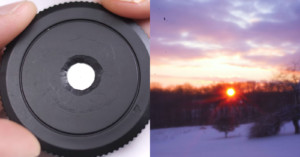
Have a camera body cap lying around collecting dust? Did you know that you can easily turn it into a do-it-yourself pinhole lens? Matt from Blue Mantle Films created this 1.5-minute video tutorial that shows how.
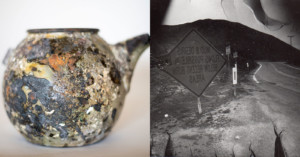
Back in August 2016, the Blue Cut wildfire tore through Cajon Pass in Southern California, burning 37,000 acres, dozens of cars, and over 300 homes and structures. Local photojournalist James Quigg documented the fire's damage in a creative and unusual way: he found a burned teapot and turned it into a pinhole camera.
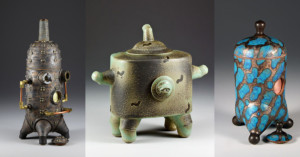
Steve Irvine is a Canadian potter who has had a lifelong interest in photography. Some years ago, Irvine decided to combine his two passions by creating ceramic cameras. Each beautiful and unique creation is fully functional as a pinhole camera.
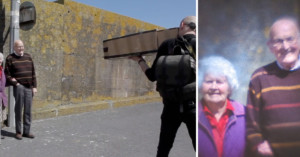
"Camera obscura" refers to a device for viewing an image that makes use of the principles of pinhole imagery, and is usually made with a box of sorts. It's this that was eventually turned into the first pinhole camera - and now you can make your own!
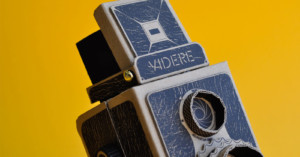
Are you a keen DIY hand? This do-it-yourself pinhole camera is the brainchild of Kelly Angood. This is her third project involving pinhole cameras, and it's something that she's had great success with in the past.
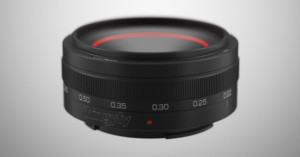
Pinhole photography is still alive and well in the digital age, and this new pinhole lens from Thingyfy is the first to offer a variable aperture. Available through their Kickstarter campaign at about $50, the lens is a relatively cheap way to experiment with camera obscura.
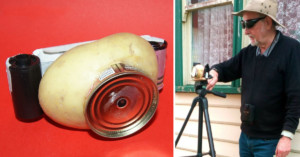
Low quality photos and videos are often referred to these days as being "potato quality," or so bad that they look like they were taken using a potato. But for photographer Colin Lowe, "potato quality" is a spot-on description for some of his photos because they were literally taken with a potato.
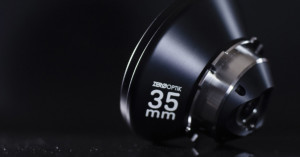
When you think pinhole lenses, you probably think cheap, low-fi lenses created by hand for DIY photography projects. Zero Optik takes things in the opposite direction: it's a new line of high-quality pinhole lenses that are designed for professionals.
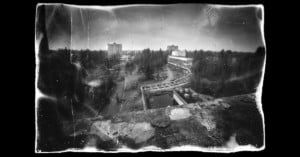
My name is Grzegorz Sawa-Boryslawski, and I'm a Polish photographer whose work since 2005 has been focus on pinhole and zone plate photography. In 2014 and 2015, I shot the world's first pinhole photos inside the Chernobyl Exclusion Zone.
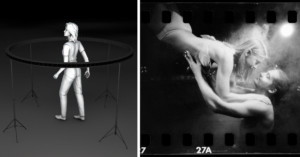
For his master thesis project at Hochschule Mannheim in Germany, photographer and communication designer Andreas Neumann decided to create bullet time animations using analog photography. He ended up creating a camera ring composed of 100 individual pinhole cameras for the project, titled Orbita 13.
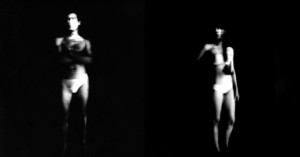
How long can you strike a certain pose and stay perfectly still? For pinhole photographer Israel Caballero's project Veneno Dulce ("Sweet Poison"), models were required to stand and sit motionless in front of his camera for over 10 minutes at a time.
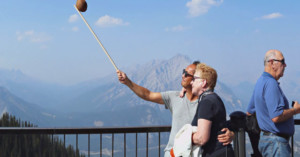
Photographer Kotama Bouabane of Toronto, Canada, has a camera that attracts strange stares when he uses it in public. He shoots with a coconut.